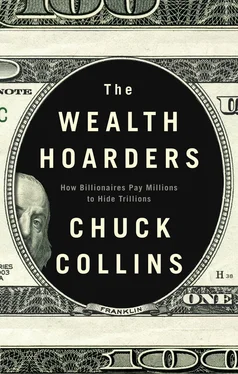Eventually, charitable donations flow; first to overly endowed alma maters like Harvard University and obligatory artistic institutions like the Boston Symphony Orchestra. Then to the land conservancies to purchase holdings to buffer their country properties and the organizations upon whose boards she or her family members serve. Finally, after most of the mighty river has been siphoned away, a trickle flows to what Christians call the “corporal works of mercy” – feeding the hungry, sheltering the homeless, clothing the naked (Isaiah commanded these as well). To me, the payout doesn’t warrant all the time and talk of charity. The more I witness, the more the philanthropy appears as a salve for wealth advantage, a glaze to give a clay pot a glowing exterior. Dee has taught me something, but it isn’t the lesson of multi-generational stewardship she intended. By opening the door to her family office, she has given me an unusual view of the “river of money.” I am revolted by it. I want no part of this wealth preservation world.
A lifetime has passed since 1983 and my meetings with Dee. She has left this world. At her memorial service, I sit in the back of old Trinity Church, listening to her grandchildren tell their stories. I wish I could “ring her up” and ask her about her impressions of the way the world has changed. A few years after my visits with Dee at her family office, I gave the wealth in my name to several foundations that fund “change not charity.” Decades later, I have no regrets about this decision. Even without the money, I appreciate the ample inheritance I received of other intergenerational advantages, many of them hardwired into my life. 2
My feelings about inherited wealth and philanthropy have only intensified over time, after four decades of surging income and wealth inequality. For twenty years, I’ve worked to defend the estate tax – the only US levy on the inherited wealth of multi-millionaires and billionaires. I’ve seen how philanthropy has becoming increasingly “top heavy,” dominated by larger mega-donors as donations from small donors decline. Most alarming, trillions of dollars are now vanishing into a hidden-wealth archipelago. With the help of an increasingly aggressive “Wealth Defense Industry,” vast amounts of treasure are being sequestered into dynastic trusts, anonymous companies, shell corporations, and offshore tax havens.
I recently read that there are an estimated 10,000 family offices globally, up from several hundred in Dee’s day. They manage the assets of the global super-wealthy, all with the primary mission of “wealth preservation” over multiple generations. These global rich are increasingly stateless, detaching their money from nation states and conventional representations of ownership in order to hide and preserve it. A global oligarchy is growing – and it does not bode well for everyone else and the planet. That is my motivation for this primer about the Wealth Defense Industry, or more accurately, the Dynasty Protection Racket.
1 1. The names of people in this section have been changed.
2 2. See my book, Collins, Born on Third Base: A One Percenter Makes the Case for Tackling Inequality, Bringing Wealth Home, and Committing to the Common Good (Chelsea Green, 2016).
Prelude 2004 The Blue Hippo Swindle
The dancing Blue Hippo seemed harmless enough. Some people still remember the Blue Hippo company’s late-night television advertisements in 2004, back when George W. Bush was president. Blue Hippo promised to sell computers to people with bad credit. “I saw them on the Christian station,” recalled one jilted shopper.
Customers were encouraged to call a toll-free number, pay the $99 sign-up fee, and agree to have $39.99 taken from their bank account every week . Once a certain number of payments were received, Blue Hippo promised to ship the computer, printer, flat screen TV, or whatever else the customer ordered. Some were promised rebates. Months and years would pass. Blue Hippo took money out of people’s bank accounts. Many customers received nothing. By 2005, Maryland’s consumer protection division was flooded with complaints about Blue Hippo. People warned each other on consumer bulletin boards. 1The personal complaints are heart wrenching.
“M.A.E. was looking to get The Boy a laptop for Christmas,” wrote Larry. “She got suckered by this outfit calling itself Blue Hippo. To make a long story short, they told her she could get a laptop for $600, then sold her a $300 desktop system for $2000. She called and canceled the order, and they kept taking money out of her account anyway.”
“On December 5, 2006, I contacted Blue Hippo to purchase a computer,” wrote Linda. “After 6 months I had not received my computer but my account was being deducted every week … Since then I have canceled the order and requested my refund. I have called on many occasions only to get the runaround. It is now January 3, 2008. I get a recording saying an account specialist will help me shortly. After 45 minutes I’m still waiting. What kind of scam is this?”
“It has been 11 months,” wrote Valerie on a consumer bulletin board. “Needless to say I have canceled my account and stopped payments on this computer. I received a letter from a law firm, Hosto, Buchan, PLLC, to garnish my payroll for this computer that would have cost $500 at Walmart. I will be fighting this.” The law firm that Blue Hippo hired to collect from their customers, the Arkansasbased firm Hosto Buchan, has the motto, “You Concentrate on Your Business. We Make Sure You Get Paid.” 2
“They have taken a little over $1,000 from my checking account,” wrote Vicky. “Finally I put a stop-payment on that and reported it to the attorney general in their state … I want my money back.”
“I ordered a Dell Computer from Blue Hippo in February 2008 and still not received it,” complained James M. “Every time you call it’s always a different lie one after another … I am a senior citizen and can’t afford to throw money in the toilet. All together they have taken $753.82 from my checking account.”
“I have called multiple times and no one there can tell me who the CEO or President is,” wrote another Valerie. “I’ve been told that the employees don’t have supervisors that they report to. So, whoever runs this scam operation, he has his ### well covered.”
Valerie has no idea how right she was. Joseph K. Rensin, the man responsible for the scam, indeed did have his ### and assets well protected. Rensin was CEO of Edison Worldwide, the company that wholly owned Blue Hippo and was based in Windsor Mill, Maryland. In 2007, the Maryland attorney general announced a settlement with Blue Hippo. The company agreed to pay restitution to Maryland customers who had been ripped off. But Blue Hippo kept going with their marketing in other states. 3
Eventually, the Federal Trade Commission sued Rensin, claiming that his wholly owned company, BlueHippo Funding LLC, and its subsidiary, BlueHippo Capital LLC, had defrauded more than 50,000 customers by taking in $14 million payments for which no products where delivered. In 2008, the FTC won a judgment in the amount of $13.4 million against BlueHippo, but Rensin was not named in the judgment. In 2009, BlueHippo declared bankruptcy. It took another couple of years, but the government finally started to pursue Rensin personally for these fees. But Rensin was well shielded, with help from several specialized attorneys and accountants.
In 2001, Rensin established an “asset protection trust” in the Cook Islands, a remote outcropping of rocks in the South Pacific, 560 miles northeast of New Zealand. The trust, which he named the Joren Trust, was a specially designed mutation pioneered in the Cook Islands. As we will discuss later, such trusts are now available “on shore,” in trust haven states like South Dakota. Rensin is both the “settlor,” the creator of the trust, and the beneficiary. He appointed a trustee who administers the trust according to terms created by Rensin.
Читать дальше











